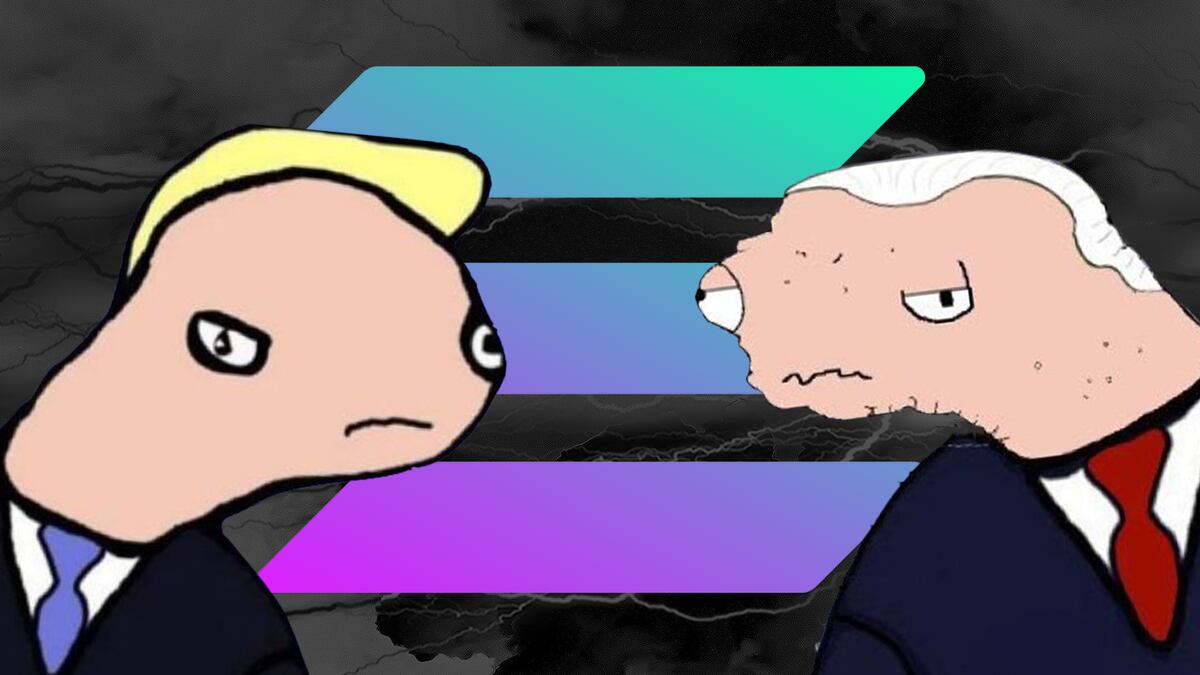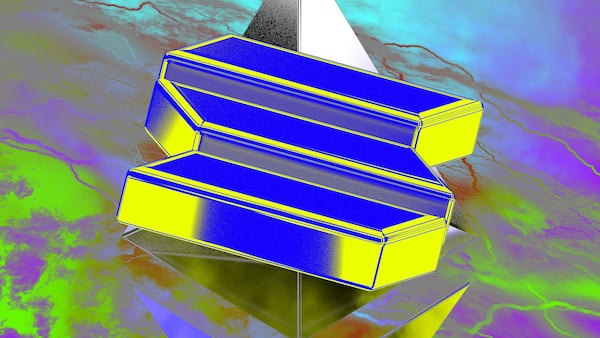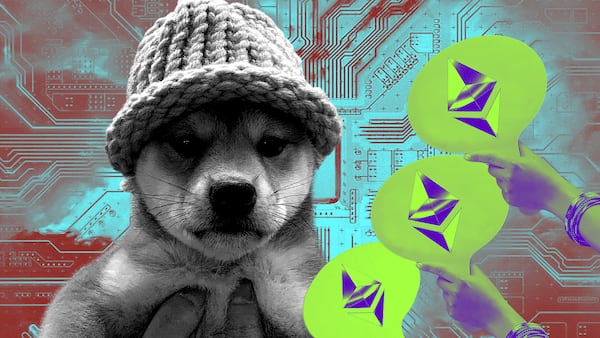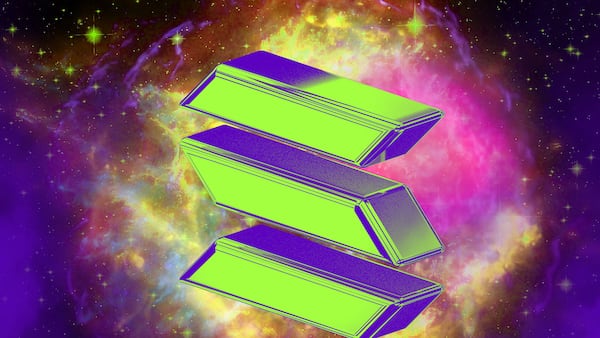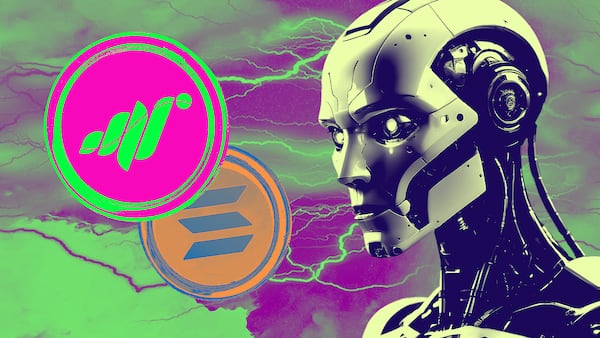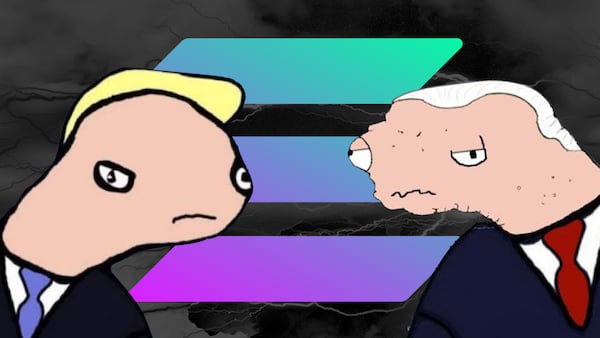- Volume on Solana’s decentralised exchanges has plummeted over the past week.
- Trading on the blockchain is dominated by memecoins and a few core assets, like stablecoins and Solana’s SOL.
Solana’s memecoin frenzy, which saw the blockchain briefly overtake Ethereum in terms of transaction volume, appears to be fizzling.
The volume generated by decentralised exchanges on Solana has declined 61% over the past week, according to data from DefiLlama. The drop is particularly steep on Raydium, Solana’s largest decentralised exchange. There, trading volume fell 72% over the past week.
Aside from stablecoins and Solana’s native cryptocurrency, SOL, memecoins have been Solana’s most popular tokens in March.
“Mid- and large-cap tokens on Solana that are linked to actual projects … have maintained a constant percentage of the overall trading volume on Solana,” Messari analyst Ally Zach told DL News.
“Whereas the volume corresponding to memes has grown substantially over the past few months to make up almost 30% of the total volume on Solana.”
Over the past week, five of the 10 most-traded tokens have been memecoins, according to data gathered by Zach.
With the exception of MEW, a memecoin that launched on Monday, interest in those tokens has fallen faster than interest in SOL, USDT, USDC, and Jito’s JitoSOL.
‘Not here to spread hate’
It ends a frenzy in retail trading that appeared to culminate last week in the proliferation of offensive tokens bearing racist and antisemitic tickers — a controversial collision of the permissionless nature of decentralised finance and crypto’s propensity to attract self-described “edgelords.”
Prominent developers including Solana founder Anatoly Yakovenko rushed to denounce the tokens, which feature all-caps tickers bearing anti-Black slurs and antisemitic tropes.
Decentralised exchanges are, by definition, permissionless, meaning anyone can create a trading pair with any two tokens without asking permission from the developers who made the protocol. But those developers typically have control over the exchange’s user interface, the website through which most people access the exchange.
The offensive tokens kicked off a debate over developers’ responsibility to police their projects’ user interfaces.
Hayden Adams, founder of Uniswap, Ethereum’s largest decentralised exchange, said the developers behind decentralised exchanges should monitor their user interfaces.
“But if you run a front end with the ability to easily block these disgusting racist tokens, you should,” he wrote on X. “I have no interest in serving or profiting off this trash.”
DEX Screener, a website that allows users to follow trading pools on decentralised exchanges, said it will review its content moderation policy.
“We won’t be the gatekeepers of what happens on-chain, but we’re definitely not here to spread hate,” the company wrote on X.
The offensive tokens could still be found on DEX Screener Wednesday. DEX Screener didn’t immediately respond to DL News’ request for comment.
DEX Screener’s announcement was controversial. Autism Capital, a popular X account that shot to fame during the collapse of FTX, lambasted the decision, writing, “Do not recreate what crypto was originally created to fight against.”
Representatives of Solana’s three largest decentralised exchanges, Raydium, Orca and Meteora, didn’t immediately respond to DL News’ request for comment.
The controversy isn’t unique to Solana.
In 2017, some Ethereum users complained that a proliferation of racist tokens was hurting the blockchain.
Pre-sales and rug pulls
Zach, the Messari analyst, attributed last week’s surge to a relatively new phenomenon: raising money for a token before its launch.
In a so-called presale, investors transfer funds to a specified wallet address to receive a future token allocation proportionate to their investment. Solana saw 33 presales between March 12 to 23 that collectively raised over 796,000 SOL, about $150 million, according to data gathered by crypto sleuth ZachXBT.
“At this point, that meta has mostly died down,” Messari analyst Zach told DL News. “That being said, even though volumes are down about 53% from last week, Solana is still seeing above normal trading volumes.”
Despite their popularity, many presales have left investors empty-handed. SLERF, for example, ended up inadvertently destroying over $10 million of investor funds.
A few managed to launch successfully. After its presale, BOME quickly reached a market capitalization exceeding $1.4 billion.
Meanwhile, the memecoin mania has overtaken another blockchain: the Coinbase-built Base.
Trading volumes on Base have spiked by 63% in the last week, driven largely by memecoins.
But Base isn’t necessarily sucking up Solana’s memecoin energy — the Ethereum rollup processed just one-fifth of Solana’s overall transaction volume over the past week.
“As the attention [on Solana] wanes from memecoins, the volume is bound to go down on Solana,” Zach said. “But it’s also true that attention in the markets (and the corresponding volumes) moves cyclically so I’d expect the volumes on Solana to surge again when attention pivots back to memes.”


